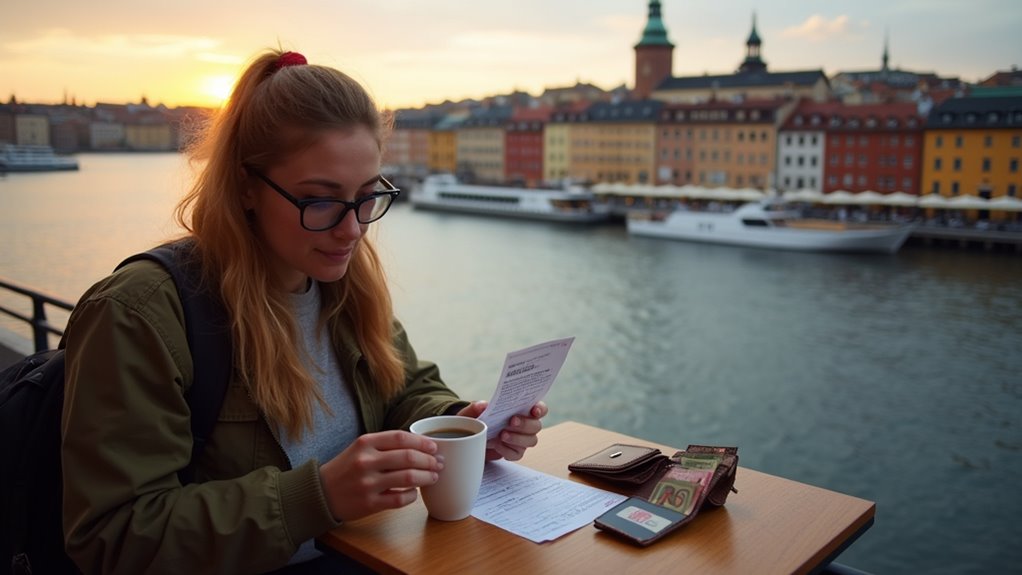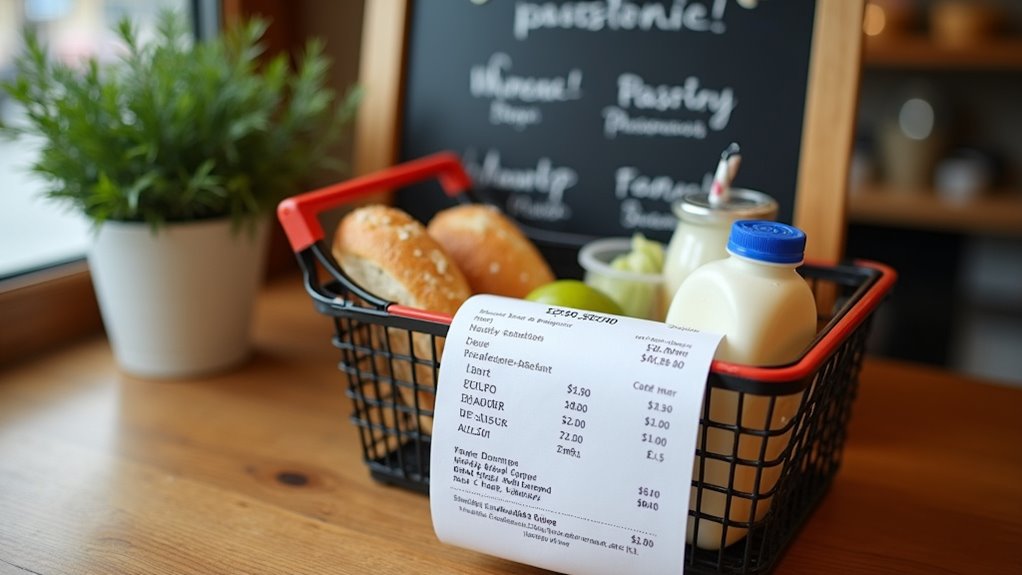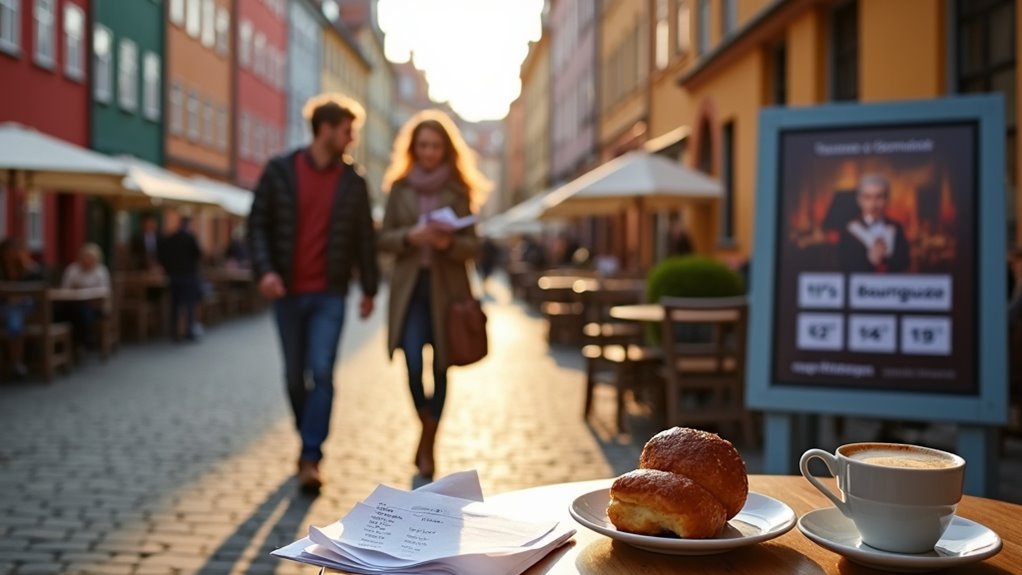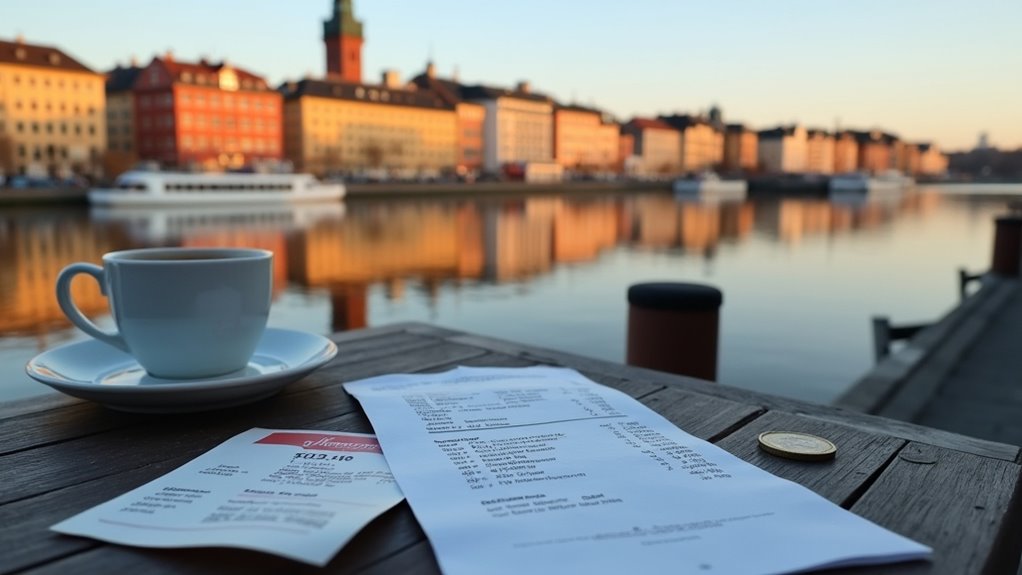Physical Address
304 North Cardinal St.
Dorchester Center, MA 02124
Physical Address
304 North Cardinal St.
Dorchester Center, MA 02124

While Stockholm ranks mid-tier among European capitals for cost, clever travelers can experience Sweden's stunning capital without emptying their wallets.
Stockholm sits in the middle range for European capitals – more affordable than Copenhagen but pricier than Berlin. You’ll spend about $1,246 monthly excluding rent, with accommodation being your biggest expense. Budget travelers can manage well with hostels ($40/night), dagens lunch specials ($12-18), and free activities. Winter offers significant savings with hotel rates dropping up to 40%. The city’s excellent public transport and seasonal deals can transform what might seem expensive into a surprisingly manageable adventure.

While Stockholm ranks as the most affordable Nordic capital at 102nd globally on the Mercer Index, it still commands a substantial budget compared to many European destinations. You’ll spend about 28.3% less than in New York, putting it on par with Austin, Texas.
Stockholm sits comfortably below its Nordic neighbors—significantly cheaper than Copenhagen (11th) and Helsinki (40th). However, you’ll pay considerably more here than in Berlin, Madrid or Eastern European capitals like Budapest. This stands in stark contrast to cities like Karachi or Barranquilla, which offer dirt-cheap living costs but with higher safety concerns. The city’s reputation as Sweden’s capital makes it a prime tourist destination with corresponding costs for visitors.
With a Numbeo index of 61.8/100, expect to budget around $1,246 monthly (excluding rent) as a single person. The good news? Your higher expenses are generally offset by Sweden’s robust salaries, averaging 40,000 kr monthly, and all-encompassing public services.
When planning your Stockholm visit, accommodation will likely consume the largest portion of your budget. Budget hotels start at $40-43 nightly, while mid-range options run $73-96. Luxury accommodations average $216 per night.
Timing matters considerably—peak season (June-August) prices jump 20-40%, while traveling November-March can save you 15-30%.
For longer stays, consider alternatives like Airbnb studios ($150-250/night) or apartment hotels ($120-180/night).
If you’re adventurous, boat hostels offer unique experiences at $40-70 nightly, while summer camping costs just $15-25 per night.
For extended stays, budget neighborhoods like Södermalm or suburbs such as Solna offer better value than central districts like Norrmalm or Östermalm. The trendy Södermalm district features Hotel Rival with its popular ABBA themes and pillow menu for a uniquely Swedish experience. If Stockholm’s prices seem overwhelming, consider that affordable destinations in Croatia offer significantly lower living costs as an alternative European experience.
Students should budget at least SEK 10,584 monthly for basic living expenses.

Eating in Stockholm presents a significant budgetary consideration, with average daily food costs ranging from $37-$69 per person. You’ll find grocery prices higher than many European capitals, with beef mince at 123 SEK/kg and chicken around 113 SEK/500g.
For savings, take advantage of “dagens lunch” specials ($12-18) that include a complete meal with salad, bread, and coffee. Self-catering can dramatically reduce costs to $5-15 daily if you cook pasta, rice, and seasonal vegetables. Budget travelers typically spend about ~$86 daily across all expenses, making strategic meal planning essential.
Restaurant meals vary widely: street food ($10-15), traditional Swedish meatballs ($18-30), and fine dining ($100-200+). Stockholm sits between price points—pricier than Berlin but cheaper than Oslo. While Stockholm isn’t categorized among luxury holiday spots in Europe, it still offers high-end dining experiences for those seeking premium options.
Always request tap water (it’s free and excellent) to avoid unnecessary beverage costs.
After tackling Stockholm’s food expenses, your next major budget item will be transportation. The city’s public transit offers several options to fit your needs.
A single ticket costs 45 SEK for adults (26 SEK for seniors/youth) and lasts 75 minutes, while a 24-hour pass runs 190 SEK.
For stays of three days or longer, multi-day passes offer significant savings. The 7-day pass at 470 SEK saves about 300 SEK compared to buying daily passes.
Traveling with kids? Those under 7 ride free with a ticket-holding adult, and one adult can bring up to six children aged 7-11 for free. You can easily purchase and manage your tickets through the SL-Journey planner app available on both Android and Apple devices.
Avoid the costly 177 SEK airport supplement by using alternative services.
For short distances, walking Stockholm’s central areas can eliminate transit costs entirely. This must-visit destination offers numerous attractions that are conveniently accessible on foot.

Stockholm’s affluent cultural scene offers entertainment for every budget, though prices can catch unprepared visitors off guard. Museum entries typically range from 120-290 SEK, with ABBA Museum being among the pricier options at 290 SEK per adult.
Major annual events like Stockholm Marathon and STHLM Fields command hefty ticket prices (600-1500 SEK), while performing arts venues vary from 150 SEK for basic theater seats to 1200 SEK for premium opera experiences. The annual Kulturnatt Stockholm in April provides excellent value with free admission to numerous cultural venues. The city also boasts a vibrant nightlife scene with bars and clubs ranging from affordable to high-end establishments.
For budget-conscious travelers:
Consider purchasing a Stockholmskortet if you’re planning multiple attractions—it often pays for itself within a day.
While travelers and residents both face Stockholm’s notorious high costs, their financial experiences differ dramatically in several key ways.
As a visitor, you’ll pay premium rates for temporary lodging, while locals spread housing costs over monthly rents.
You’ll spend heavily on restaurant meals ($37 daily per person), whereas residents save by cooking at home despite high grocery prices.
Transportation costs hit travelers harder too—locals benefit from monthly passes instead of pricey single tickets.
Your sightseeing budget covers attraction fees, while residents allocate funds to utilities and everyday necessities.
The Swedish welfare system provides locals with healthcare and tax benefits you won’t access.
The strength of the krona also impacts your perceived costs, especially if you’re converting from a weaker currency.
Shoulder seasons like April-June offer cheaper flight options for visitors while providing equally enjoyable Stockholm experiences with fewer crowds.
Many travelers save money by planning day trips to snorkeling spots instead of expensive city entertainment, similar to how locals enjoy free outdoor activities.

Getting around Stockholm on a tight budget isn’t impossible, though it requires strategic planning to avoid emptying your wallet. Focus on affordable accommodations like hostels or Airbnb apartments for longer stays, and consider camping during summer months to slash costs dramatically.
For transportation, invest in a subway pass and embrace walking—Stockholm’s compact center is perfect for exploring on foot. When hunger strikes, shop for snacks at local stores and try the veggie buffets at places like Hermann’s. Remember that many establishments in Stockholm prefer card payments, limiting the usefulness of carrying cash. If you’re debating between Scandinavian capitals, Stockholm offers more attractions than Helsinki, though both have their unique charm.
Timing your visit to Stockholm can dramatically impact your travel budget, with price swings affecting everything from accommodation to activities throughout the year. During peak season (June-August), expect accommodation costs to surge 20-40% above average, though you’ll benefit from numerous free outdoor activities and park concerts.
For better value, consider shoulder seasons (April-May, September-October) when you’ll find moderate pricing, fewer crowds, and stable restaurant prices without seasonal surcharges. Tourists can save significantly by planning their daily food budget of approximately 37 dollars per day during these periods. Much like Iceland’s price variations, Stockholm’s costs fluctuate based on tourist demand throughout the seasons.
Winter (November-March) offers the most savings, with hotel rates dropping up to 40%. You’ll find January-February retail sales, free ice skating with your own equipment, and February’s Restaurant Week fixed-price menus.
Year-round savings apps like Karma and TooGoodToGo can further reduce your expenses regardless of when you visit.

How does Stockholm truly measure up against other European capitals when it comes to your travel budget? Ranked 26th most expensive in Europe, Stockholm offers a mid-tier expense profile that might surprise you.
Compared to its European counterparts:
Stockholm sits comfortably in the middle of Europe’s price spectrum—more affordable than premium capitals, yet pricier than Eastern alternatives.
While Stockholm isn’t cheap by global standards, your money stretches further here than in premium capitals like London or Paris, though you’ll pay more than in Eastern European cities. For comparison, Stockholm is less expensive than Switzerland’s major cities, which consistently rank among the highest cost indexes in Europe. Many travelers find Copenhagen a worthwhile alternative to Stockholm, offering similar Nordic experiences but with different pricing structures across accommodations and attractions.
Stockholm’s midrange cost profile means the city rewards strategic planning, especially for those settling in for extended periods. Start by registering for bostadsförmedlingen years before your move to access below-market rentals, or consider kollektivt boende to slash housing costs by 30-50%.
Invest in an SL Access Card (970 kr monthly) for unlimited transit, and utilize the city’s extensive bike network for daily commutes.
Shop at Lidl or Willys to save 15-20% on groceries compared to premium chains, and take advantage of affordable dagens lunch specials (95-125 kr) for your main meal. Consider purchasing personal care items like deodorant at these discount stores, as a typical 50ml roll-on costs around 44 kr at regular prices.
Don’t overlook tax benefits: claim the RUT deduction for household services and work-from-home deductions if applicable.
For free entertainment, tap into Stockholm’s extensive library network and community resources through stockholm.se. If Stockholm’s cost of living becomes overwhelming, exploring cheaper Swedish cities might provide more affordable alternatives while still enjoying the Swedish lifestyle.
Yes, Stockholm will strain your wallet, but it’s not a financial black hole if you’re clever. You’ll dance with expenses by embracing free attractions, opting for lunch specials, and steering public transport like a local. While the capital’s price tag might pinch, its beauty and culture offer abundant returns. Pack smart strategies alongside your Swedish dreams, and you’ll stretch those kronor further than you’d think.